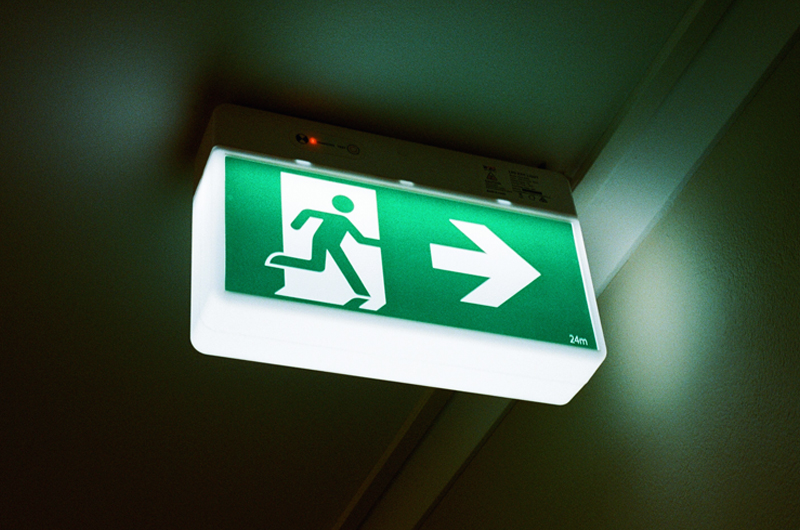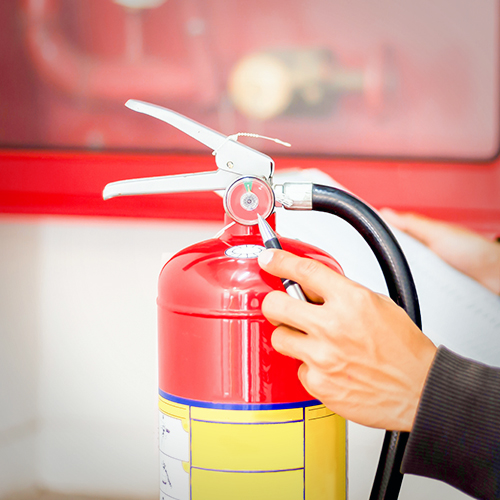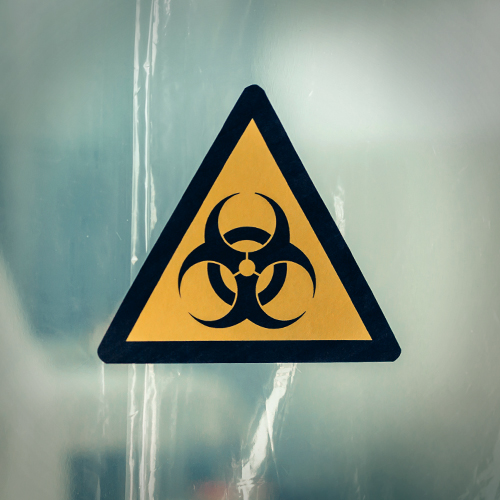
Helpful Resources
Emergency Response Plans
The actions taken in the initial minutes of an emergency are critical. A prompt warning to employees to evacuate, shelter or lockdown can save lives. A call for help to public emergency services that provides full and accurate information will help the dispatcher send the right responders and equipment. An employee trained to administer first aid or perform CPR can be lifesaving. Action by employees with knowledge of building and process systems can help control a leak and minimize damage to the facility and the environment.
The first step when developing an emergency response plan is to conduct a risk assessment to identify potential emergency scenarios. An understanding of what can happen will enable you to determine resource requirements and to develop plans and procedures to prepare your business. The emergency plan should be consistent with your performance objectives.
At the very least, every facility should develop and implement an emergency plan for protecting employees, visitors, contractors, and anyone else in the facility. This part of the emergency plan is called “protective actions for life safety” and includes building evacuation (“fire drills”), sheltering from severe weather such as tornadoes, “shelter-in-place” from an exterior airborne hazard such as a chemical release and lockdown. Lockdown is protective action when faced with an act of violence.
When an emergency occurs, the first priority is always life safety. The second priority is the stabilization of the incident. There are many actions that can be taken to stabilize an incident and minimize potential damage. First aid and CPR by trained employees can save lives. Use of fire extinguishers by trained employees can extinguish a small fire. Containment of a small chemical spill and supervision of building utilities and systems can minimize damage to a building and help prevent environmental damage.
Some severe weather events can be forecast hours before they arrive, providing valuable time to protect a facility. A plan should be established, and resources should be on hand, or quickly, available to prepare a facility. The plan should also include a process for damage assessment, salvage, protection of undamaged property and cleanup following an incident. These actions to minimize further damage and business disruption are examples of property conservation.
Guidance for the development of an emergency response plan can be found in this step.
When there is a hazard within a building such as a fire or chemical spill, occupants within the building should be evacuated or relocated to safety. Other incidents such as a bomb threat or receipt of a suspicious package may also require evacuation. If a tornado warning is broadcast, everyone should be moved to the strongest part of the building and away from exterior glass. If a transportation accident on a nearby highway results in the release of a chemical cloud, the fire department may warn “shelter-in-place.” To protect employees from an act of violence, “lockdown” should be broadcast, and everyone should hide or barricade themselves from the perpetrator.

Protective actions for life safety include:
- Evacuation
- Sheltering
- Shelter-In-Place
- Lockdown
Your emergency plan should include these protective actions. If you are a tenant in multi-tenanted building, coordinate planning with the building manager.
Evacuation
Prompt evacuation of employees requires a warning system that can be heard throughout the building. Test your fire alarm system to determine if it can be heard by all employees. If there is no fire alarm system, use a public address system, air horns or other means to warn everyone to evacuate. Sound the evacuation signal during planned drills so employees are familiar with the sound.
Make sure that there are always sufficient exits available.
- Check to see that there are at least two exits from hazardous areas on every floor of every building. Building or fire codes may require more exits for larger buildings.
- Walk around the building and verify that exits are marked with exit signs and there is sufficient lighting so people can safely travel to an exit. If you find anything that blocks an exit, have it removed.
- Enter every stairwell, walk down the stairs, and open the exit door to the outside. Continue walking until you reach a safe place away from the building. Consider using this safe area as an assembly area for evacuees.
Appoint an evacuation team leader and assign employees to direct evacuation of the building. Assign at least one person to each floor to act as a “floor warden” to direct employees to the nearest safe exit. Assign a backup in case the floor warden is not available or if the size of the floor is very large. Ask employees if they would need any special assistance evacuating or moving to shelter. Assign a “buddy” or aide to assist persons with disabilities during an emergency. Contact the fire department to develop a plan to evacuate persons with disabilities.
Have a list of employees and maintain a visitor log at the front desk, reception area or main office area. Assign someone to take the lists to the assembly area when the building is evacuated. Use the lists to account for everyone and inform the fire department whether everyone has been accounted for. When employees are evacuated from a building, OSHA regulations require an accounting to ensure that everyone has gotten out safely. A fire, chemical spill or other hazard may block an exit, so make sure the evacuation team can direct employees to an alternate safe exit.
Sheltering
If a tornado warning is broadcast, a distinct warning signal should be sounded, and everyone should move to shelter in the strongest part of the building. Shelters may include basements or interior rooms with reinforced masonry construction. Evaluate potential shelters and conduct a drill to see whether shelter space can hold all employees. Since there may be little time to shelter when a tornado is approaching, early warning is important. If there is a severe thunderstorm, monitor news sources in case a tornado warning is broadcast. Consider purchasing an Emergency Alert System radio – available at many electronic stores. Tune in to weather warnings broadcast by local radio and television stations. Subscribe to free text and email warnings, which are available from multiple news and weather resources on the Internet.
Shelter-In-Place
A tanker truck crashes on a nearby highway releasing a chemical cloud. A large column of black smoke billows into the air from a fire in a nearby manufacturing plant. If, as part of this event, an explosion, or act of terrorism has occurred, public emergency officials may order people in the vicinity to “shelter-in-place.” You should develop a shelter-in-place plan. The plan should include a means to warn everyone to move away from windows and move to the core of the building. Warn anyone working outside to enter the building immediately. Move everyone to the second and higher floors in a multistory building. Avoid occupying the basement. Close exterior doors and windows and shut down the building’s air handling system. Have everyone remain sheltered until public officials broadcast that it is safe to evacuate the building.
Lockdown
An act of violence in the workplace could occur without warning. If loud “pops” are heard and gunfire is suspected, every employee should know to hide and remain silent. They should seek refuge in a room, close and lock the door, and barricade the door if it can be done quickly. They should be trained to hide under a desk, in the corner of a room and away from the door or windows. Multiple people should be trained to broadcast a lockdown warning from a safe location.
In addition to the following resources available on the Internet, seek guidance from your local fire department, police department, and emergency management agency.
- Exit Routes and Emergency Planning – U.S. Occupational Safety & Health Administration (OSHA) 29 CFR 1910 Subpart E
- NFPA 101: Life Safety Code® – National Fire Protection Association
- Employee Alarm Systems – OSHA 29 CFR 1910.165
- Evacuation Planning Matrix – OSHA
- Evacuation Plans and Procedures eTool – OSHA
- Design Guidance for Shelters and Safe Rooms – Federal Emergency Management Agency (FEMA 453)
 Stabilizing an emergency may involve many different actions including: firefighting, administering medical treatment, rescue, containing a spill of hazardous chemicals or handling a threat or act of violence. When you dial 9-1-1 you expect professionals to respond to your facility. Depending upon the response time and capabilities of public emergency services and the hazards and resources within your facility, you may choose to do more to prepare for these incidents. Regulations may require you to take action before emergency services arrive.
Stabilizing an emergency may involve many different actions including: firefighting, administering medical treatment, rescue, containing a spill of hazardous chemicals or handling a threat or act of violence. When you dial 9-1-1 you expect professionals to respond to your facility. Depending upon the response time and capabilities of public emergency services and the hazards and resources within your facility, you may choose to do more to prepare for these incidents. Regulations may require you to take action before emergency services arrive.
If you choose to do nothing more than call for help and evacuate, you should still prepare an emergency plan that includes prompt notification of emergency services, protective actions for life safety and accounting of all employees.
Developing the emergency plan
Developing an emergency plan begins with an understanding of what can happen. Review your risk assessment. Consider the performance objectives that you established for your program and decide how much you want to invest in planning beyond what is required by regulations.
Assess what resources are available for incident stabilization. Consider internal resources and external resources including public emergency services and contractors. Public emergency services include fire departments that may also provide rescue, hazardous materials, and emergency medical services. If not provided by your local fire department, these services may be provided by another department, agency or even a private contractor. Reach out to local law enforcement to coordinate planning for security related threats.
Document available resources. Determine whether external resources have the information they would need to handle an emergency. If not, determine what information is required and be sure to document that information in your plan.
Prepare emergency procedures for foreseeable hazards and threats. Review the list of hazards presented at the bottom of the page. Develop hazard and threat specific procedures using guidance from the resource links at the bottom of this page.
Warning, Notifications, and Communications
Plans should define the most appropriate protective action for each hazard to ensure the safety of employees and others within the building. Determine how you will warn building occupants to take protective action. Develop protocols and procedures to alert first responders including public emergency services, trained employees and management. Identify how you will communicate with management and employees during and following an emergency.
Roles and Responsibilities for Building Owners and Facility Managers
Assign personnel the responsibility of controlling access to the emergency scene and for keeping people away from unsafe areas. Others should be familiar with the locations and functions of controls for building utility, life safety and protection systems. These systems include ventilation, electrical, water and sanitary systems; emergency power supplies; detection, alarm, communication, and warning systems; fire suppression systems; pollution control and containment systems; and security and surveillance systems. Personnel should be assigned to operate or supervise these systems as directed by public emergency services if they are on-site.
Site and Facility Plans and Information
Public emergency services have limited knowledge about your facility and its hazards. Therefore, it is important to document information about your facility. That information is vital to ensure emergency responders can safely stabilize an incident that may occur. Documentation of building systems may also prove valuable when a utility system fails—such as when a water pipe breaks, and no one knows how to shut off the water.
Compile a site-plan and plans for each floor of each building. Plans should show the layout of access roads, parking areas, buildings on the property, building entrances, the locations of emergency equipment and the locations of controls for building utility and protection systems. Instructions for operating all systems and equipment should be accessible to emergency responders.
Provide a copy of the plan to the public emergency services that would respond to your facility and others with responsibility for building management and security. Store the plan with other emergency planning information such as chemical Material Safety Data Sheets (MSDS), which are required by Hazard Communication or “right to know” regulations.

Training and Exercises
Train personnel so they are familiar with detection, alarm, communications, warning and protection systems. Review plans with staff to ensure they are familiar with their role and can carry out assigned responsibilities. Conduct evacuation, sheltering, sheltering-in-place and lockdown drills so employees will recognize the sound used to warn them and they will know what to do. Facilitate exercises to practice the plan, familiarize personnel with the plan and identify any gaps or deficiencies in the plan.
10 Steps for Developing the Emergency Response Plan
- Review performance objectives for the program.
- Review hazard or threat scenarios identified during the risk assessment.
- Assess the availability and capabilities of resources for incident stabilization including people, systems and equipment available within your business and from external sources.
- Talk with public emergency services (e.g., fire, police and emergency medical services) to determine their response time to your facility, knowledge of your facility and its hazards and their capabilities to stabilize an emergency at your facility.
- Determine if there are any regulations pertaining to emergency planning at your facility; address applicable regulations in the plan.
- Develop protective actions for life safety (evacuation, shelter, shelter-in-place, lockdown).
- Develop hazard and threat-specific emergency procedures using the Emergency Response Plan for Businesses.
- Coordinate emergency planning with public emergency services to stabilize incidents involving the hazards at your facility.
- Train personnel so they can fulfill their roles and responsibilities.
- Facilitate exercises to practice your plan.
Pre-Incident Planning (Site and Building Information for First Responders)
- Fire Service Features of Buildings and Fire Protection Systems – U.S. Occupational Safety & Health Administration (OSHA) Publication 3256-07N
- Standard on Pre-Incident Planning – National Fire Protection Association (NFPA) 1620
Protective Actions for Life Safety
- Evacuation Planning Matrix – OSHA
- Evacuation Plans and Procedures eTool – OSHA
- Design Guidance for Shelters and Safe Rooms
Medical
- CPR and ECC Guidelines – American Heart Association
- Automated External Defibrillators (AEDs) – OSHA
- Bloodborne pathogens – OSHA 29 CFR 1910.1030
- Model Plans and Programs for the OSHA Bloodborne Pathogens and Hazard Communications Standards – OSHA Publication 3186
Firefighting
- Fire Protection – OSHA 29 CFR 1910 Subpart L
- Fire Brigades – OSHA 29 CFR 1910.156
- Standard on Industrial Fire Brigades – NFPA 600
Hazardous materials
- Hazardous Materials Emergency Planning Guide (NRT-1) – U.S. National Response Team
Natural hazards
- National Hurricane Center, Publications, Tropical Cyclone Advisory Mailing Lists, Hurricane Preparedness, The Saffir-Simpson Hurricane Wind Scale (Experimental) – National Weather Service (NWS)
- Thunderstorms, Tornadoes, Lightning, Nature’s Most Violent Storms: A Preparedness Guide, Including Tornado Safety Information for Schools – NOAA, National Weather Service
- Tornado Protection: Selecting Refuge Area in Buildings – FEMA 431
Rescue
- Permit-Required Confined Spaces – OSHA 29 CFR 1910.146
- Standard for Rescue Technician Professional Qualifications – NFPA 1006
- Standard on Operations and Training for Technical Search and Rescue Incidents – NFPA 1670
Workplace Violence
- Dealing with Workplace Violence: A Guide for Agency Planners – United States Office of Personnel Management
- Workplace Violence—Issues in Response – Federal Bureau of Investigation
Terrorism, Bomb Threats, and Suspicious Packages
- Ensuring Building Security – DHS
- Safe Rooms and Shelters – Protecting People Against Terrorist Attacks – FEMA 453
- Guidance for Protecting Building Environments from Airborne Chemical, Biological, or Radiological Attacks – National Institute for Occupational Safety and Health, Publication No. 2002-139, 2002
Natural Hazards

Geological hazards
- Earthquake
- Tsunami
- Volcano
- Landslide, mudslide, subsidence

Biological hazards
- Foodborne illnesses
- Pandemic/Infectious/communicable disease (Avian flu, H1N1, etc.)

Meteorological Hazards
- Flood, flash flood, tidal surge
- Water control structure/dam/levee failure
- Drought
- Snow, ice, hail, sleet, arctic freeze
- Windstorm, tropical cyclone, hurricane, tornado, dust storm
- Extreme temperatures (heat, cold)
- Lightning strikes (wildland fire following)
Human-caused Events

Accidental
- Hazardous material spill or release
- Nuclear power plant incident (if located in proximity to a nuclear power plant)
- Explosion/Fire
- Transportation accident
- Building/structure collapse
- Entrapment and or rescue (machinery, confined space, high angle, water)
- Transportation Incidents (motor vehicle, railroad, watercraft, aircraft, pipeline)

Intentional
- Robbery
- Lost person, child abduction, kidnap, extortion, hostage incident, workplace violence
- Demonstrations, civil disturbance
- Bomb threat, suspicious package
- Terrorism
Technology Caused Events

- Utility interruption or failure (telecommunications, electrical power, water, gas, steam, HVAC, pollution control system, sewerage system, other critical infrastructure)
- Cyber security (data corruption/theft, loss of electronic data interchange or ecommerce, loss of domain name server, spyware/malware, vulnerability exploitation/botnets/hacking, denial of service)
Taking action before a forecast event, such as a severe storm, can prevent damage. Prompt damage assessment and cleanup activities following the storm can minimize further damage and business disruption. These actions are considered “property conservation”—an important part of the emergency response plan. Much of the following guidance is directed to building owners and facility managers. However, tenants should also develop a plan in coordination with building owners and managers as well as public authorities.
Preparing a Facility for a Forecast Event
Body copy: Actions to prepare a facility for a forecast event depend upon the potential impacts from the hazards associated with the event. Conduct a risk assessment to identify severe weather hazards including winter storms, arctic freeze, tropical storm, hurricane, flooding, storm surge, severe thunderstorm, tornado and high winds. Also consider non-traditional hazards, such as a planned event involving a large crowd.
Property conservation actions should focus on protection of the building and valuable machinery, equipment and materials inside. Potential damage may be prevented or mitigated by inspecting the following building features, systems and equipment:

- Windows and doors
- Roof flashing, covering and drainage
- Exterior signs
- Mechanical equipment, antennas and satellite dishes on rooftops
- Outside storage, tanks and equipment
- Air intakes
- High value machinery
- Sensitive electronic equipment including information technology and process controllers
The review of building components may also identify opportunities for longer-term mitigation strategies.
Property conservation activities for specific forecast events include the following:

Winter storm
Keep building entrances and emergency exits clear; ensure there is adequate fuel for heating and emergency power supplies; monitor building heat, doors, and windows to prevent localized freezing; monitor snow loading and clear roof drains.

Flooding
Identify the potential for flooding and plan to relocate goods, materials and equipment to a higher floor or higher ground. Clear storm drains and check sump and portable pumps. Raise stock and machinery off the floor. Prepare a plan to use sandbags to prevent water entry from doors and secure floor drains.
Salvage and Actions to Prevent Further Damage Following an Incident
Separating undamaged goods from water-soaked goods is an example of salvage. Covering holes in a roof or cleaning up water and ventilating a building are also part of property conservation. The property conservation plan should identify the resources needed to salvage undamaged goods and materials; make temporary repairs to a building; clean up water, smoke and humidity; and prepare critical equipment for restart.
Resources for property conservation include the following:
- water vacuums and tools to remove water
- fans to remove smoke and humidity
- tarpaulins or plywood to cover damaged roofs or broken windows
- plastic sheeting to cover sensitive equipment
Compile an inventory of available equipment, tools and supplies and include it with the emergency response plan. Identify precautions for equipment exposed to water or high humidity and procedures for restarting machinery and equipment.
Identify contractors that may be called to assist with clean up and property conservation efforts. Keep in mind that competition for contractors, labor, materials and supplies prior to a forecast storm or following a regional disaster may be intense. Plan and secure contractors and other resources in advance.